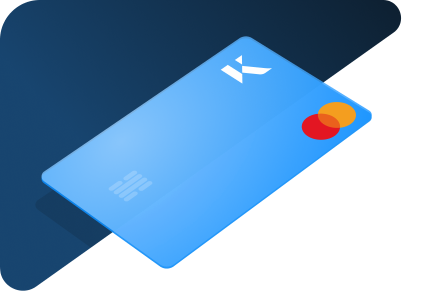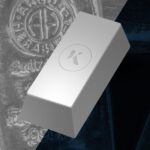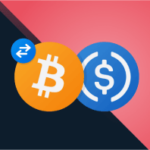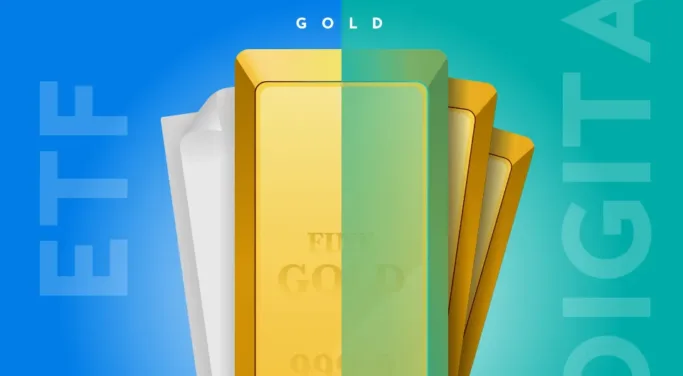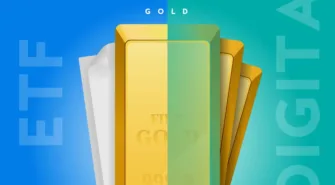When hearing about the potential returns from Gold ETFs, it can be an easy bandwagon to jump on. The promises of market exposure and returns without the necessity for ownership can seem appealing – at a first glance.
However, an aspect less explored in the discussion of Gold ETFs is the potential risks they entail. These can often be downplayed by providers as part and parcel of the inherent structure and operation of Gold ETFs.
Keep reading to find out more about the differences between these two types of gold investment, and why investing in gold shares is not the same as digitalised gold.
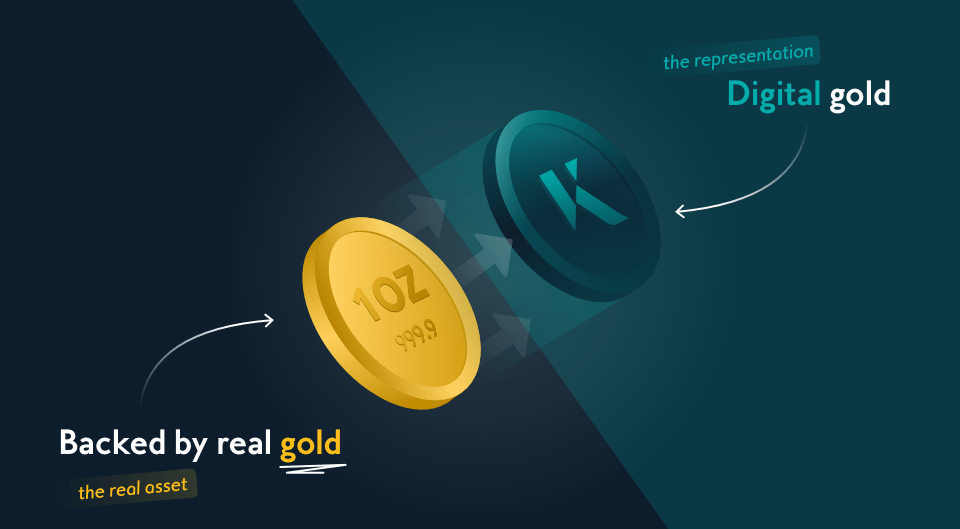
What is digital gold (gold-backed crypto)?
Digital gold – often termed gold-backed crypto – is transforming the nature of gold investment, and reinventing the asset by increasing its liquidity and making it more readily available via the blockchain. Gold-backed crypto is a digital representation of the underlying asset, physical gold bullion.
With the most providers, gold-backed coins or tokens are allocated on a 1:1 basis, with their equivalent amount in physical gold bullion. For instance, one KAU is backed by one gram of physically allocated gold.
Alongside the advent of blockchain, digital gold has risen in popularity in recent years, reducing the barriers to entry for individuals seeking access to gold investment. And, although a relatively new innovation, digital gold is making waves by securing individuals with an alternative form of payment to fiat currencies.
With many analysts arguing that the market is displaying behaviour typical of a recessionary economy, the constantly evolving technology of blockchain is enabling individuals to take ownership of an asset, recognised for its safe-haven properties.
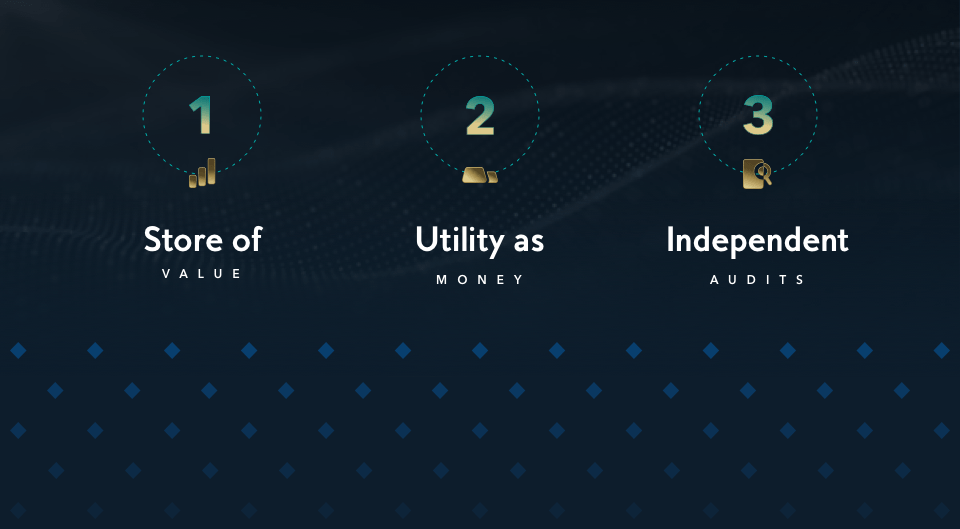
Why choose digital gold?
Purchasing digital gold currencies can be an advantageous method of acquiring the asset – especially in comparison to unbacked digital currencies.
Store of Value
The value of gold-backed crypto is derived from the fact that every single coin or token is pegged to a physical, tangible asset.
For this reason, many recognise that asset-backed ‘stablecoins’ have the ability to circumvent one of crypto’s major pitfalls – a lack of intrinsic value, which leaves them vulnerable to severe price fluctuations.
Safe Haven
While physical backing is important, digital gold owes credence to backing from an asset that has been considered a ‘safe haven’ investment for millennia.
Investors in the metal benefit from the fact that gold has maintained its purchasing power throughout time, due to the fact that it cannot be printed – rather, only minted.
In the current economic climate, many are returning to gold in response to high levels of inflation on both sides of the Atlantic – those not seen for 40 years – as well as a particularly volatile market already in play.
Utility as Money
Another aspect of gold-backed crypto to consider is the sheer fact that it is transforming the metals industry, reshaping its utility beyond an investment vehicle, into a global, borderless currency.
With the addition of a card, users are able to spend their bullion at the exact point of sale, in seconds. The aid of the blockchain offers the potential for individuals to integrate gold as a standard part of their daily payments – just like any other currency.
Not to mention, although gold-backed crypto is a digital currency, users are entitled to redeem the underlying gold backing their coins anytime they wish to, with providers like Kinesis offering redemption from as low as 100g for gold.
Auditing
As a finer point, it is a given that digital gold is readily associated with the transparency and immutability of the blockchain, to account for all coins or tokens in circulation. But while the blockchain itself does provide a safeguard in that matter, auditing for the physical metals is also essential to consider.
It’s important to ensure that any gold-backed cryptocurrency provider completes frequent, independent audits by industry specialists, to verify their holdings against coins or tokens.
What are gold ETFs?
Gold Exchange-traded Funds are known under the broader umbrella term of Commodity ETFs, which are used for investment into raw goods, such as precious metals or crude oil.
Investors typically select ETFs as a way to diversify their portfolios, with these funds offering exposure to a pool of bonds, stocks, or other assets, without the need to acquire each of them separately. When an investor buys stocks, they invest entirely in one company, whereas ETF investment gives the option for investors or traders to buy a single or multiple shares within an ETF.
For a more detailed breakdown of ETFs, see our blog post here.
Some of the most popular gold ETFs hold physical gold to back their shares, with the share price tracking the price of gold. Due to the ease at which they can be traded, ETFs are often the cause of volatility in the gold market, with those holding gold ETFs often the first to be impacted by market movements – for better, or worse.
ETF investments are handled passively since returns are gathered from the tracked valuation of pooled assets rather than usage within a system. In light of this, investors have little control over their potential returns, than if they were garnered through spending or trading the asset itself, for example.
Gold ETFs – the pitfalls
For new starters in the field of gold ETFs, this avenue can at first appear as a cost-effective way to access gold and a substitute for owning the physical asset. However, there are also some significant risks to consider associated with this avenue.
Real Exposure?
While many argue that gold ETFs offer exposure to physical gold, investment in one does not guarantee legal title ownership of the asset itself.
This means that if or when the investor opts to redeem their shares, the ETF provider is not contractually obliged to supply them with a single gram of gold, and is well within their right to provide a ‘cash equivalent’.
This begs the question of whether ETFs can truly provide exposure to the physical gold market if the investor cannot take ownership of the underlying asset. One of the leading providers in the Gold ETF market specifies that investors must own a minimum of 100,000 shares before they can submit a request to redeem gold, and even then, the provider can settle in cash.
Counterparty Risk
Another aspect to point out is the importance of physical allocation when considering buying gold.
Since Gold ETFs are traded on the commodities market, they are subject to counterparty risk. It is often the case that the value of ETF shares issued is greater than the value of the gold owned by the fund, which becomes a problem in the event of insolvency of the custodian or sub-custodian.
This is the risk that holders of ETF shares must be willing to take and is an increasing possibility in times of unforeseen market circumstances or poor market decisions. Even concerning leading funds in the precious metals space, the issue of unallocated gold can leave investors vulnerable to an ETF provider’s unfulfilled obligations and their consequences.
Digital gold vs gold ETFs
The challenge of weighing up the optimal asset for both long-term investors and active traders often leads those contemplating gold to navigate towards the outwardly simple and easy access world of ETFs.
However, it is only later down the line that these same investors can be met with a whole host of maintenance fees, counterparty risk and lack of control over ETF investment. It is worth considering that digital gold combines all the properties of physical gold – ownership, asset control, proven value, and portfolio diversification – attracting investors to this option in the first place.
Digital gold gives individuals the opportunity to access this, all while combining the benefits normally associated with ETFs, such as flexible trading, and in some cases, zero storage fees on insured gold bullion.
In the form of digital gold, access to gold investment is much simpler and more efficient for anyone seeking to benefit from the metal, with Kinesis now providing that opportunity through a bespoke platform and easy-to-use interface.
At a time when inflation is skyrocketing, and the value of certain fiat currencies is cascading down a steepening slope into decline, digitalised gold (KAU) brings investors in contact with fully allocated, legal title ownership of physical bullion.
Rather than an investment solely based on paper market trading, gold on the blockchain leverages the gold investment proposition by combining the liquidity, and low-cost trading normally associated with ETFs, with ownership of the physical asset. Traders and spenders of Kinesis Gold can also participate in a usage-based yields system, where a portion of transaction fees are shared with users across the entire network, every month.
Find out how Kinesis is transforming gold investment
This publication is for informational purposes only and is not intended to be a solicitation, offering or recommendation of any security, commodity, derivative, investment management service or advisory service and is not commodity trading advice. This publication does not intend to provide investment, tax or legal advice on either a general or specific basis.

